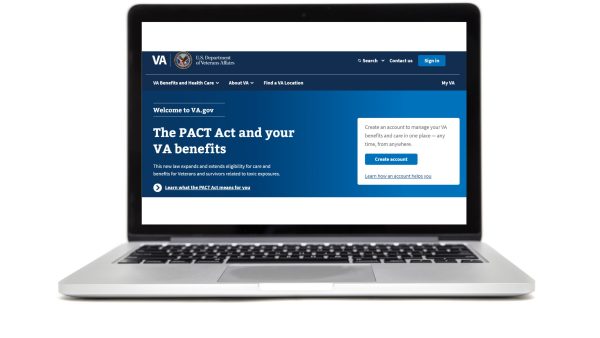Looking for Expert-Level VA Claim Answers?📱Call Us Now! 737-295-2226
Let’s be real; filing a VA disability claim can feel like trying to crack a secret code. With all the acronyms and confusing legal terms, it’s easy to feel lost and frustrated.
Whether you’re filing for the first time, going for a rating increase, or just trying to make sense of the system, understanding these 20 key VA disability terms can give you a major edge.
We’ve made the terms easy to understand, so you can move forward with confidence before you file a VA claim.
Table of Contents
Summary of Key Points
- Understanding common VA disability terms—like service connection, nexus, and lay evidence—can dramatically improve your chances of a successful claim or appeal.
- Key forms such as VA Form 21-526EZ (for new claims) and 20-0995 (for supplemental claims) play a crucial role in the VA process and must be submitted accurately.
- Knowing how the VA evaluates functional impairment, secondary conditions, and combined ratings can help you better prepare evidence and set expectations.
- TDIU, SMC, and the Appeals Modernization Act (AMA) may offer additional paths to compensation, especially for complex or severe conditions.
20 VA Disability Terms to Know Before Filing a VA Claim

VA Claim Foundations & Evidence
1. Service Connection
Service connection is the VA’s way of proving your disability is linked to your military service and is required to receive VA disability compensation.
To get service-connected, you must provide evidence of:
- A current medical diagnosis
- Evidence of an in-service event, injury, or illness
- A medical nexus (aka “link”) connecting your current medical condition to your military service
Related Post: VA Service Connection Explained: How to Prove Your VA Disability Claim!
2. Nexus
A nexus (aka medical nexus) is the critical link between your current medical condition and your military service.
This link shows that your injury, illness, or disability either began during service or was worsened by your service. Without a clear and credible nexus, your claim may be denied.
Many veterans strengthen this part of their claim with a detailed nexus letter from a qualified medical professional.
Related Post: The Importance of a Strong Nexus Statement for VA Disability
3. Lay Evidence
Lay evidence (e.g., lay statements) includes written statements from you, family members, or others who can describe your symptoms or how your condition affects your life, especially when medical records don’t fully capture them.
Related Post: Why a VA Lay Statement Matters for Your VA Disability Claim!
4. Buddy Letter
A buddy letter is a lay witness statement written by a spouse, coworker, fellow service member, friend, or employer, someone who has firsthand knowledge of your condition’s severity.
Buddy letters can help provide vital details that medical records may miss. These statements add credibility and context to your VA claim, so be sure to request them only from people who truly know your situation.
Related Post: Do I Need a VA Buddy Letter? 3 Keys to Consider
5. Service Treatment Records (STRs)
Service treatment records are your official medical records from active duty and help prove that your injury or illness began or was treated during service.
These records are a key piece of evidence in establishing service connection for your VA claim. If your STRs are incomplete or missing, you can support your claim with lay evidence, buddy letters, or private medical records.
Related Post: How to Get Your Military Medical Records FASTER!
Forms, Exams & Paperwork
6. C&P Exam (Compensation & Pension Exam)
A C&P exam is a VA-ordered medical evaluation that plays a crucial role in your disability claim by confirming your current diagnosis, establishing service connection, and assessing how your condition affects your daily life and work.
The results heavily influence whether your claim is approved, denied, or rated correctly. Although issues like rushed or biased exams can happen, veterans have options to challenge the results by requesting a new exam or submitting additional evidence.
Related Post: How Much Weight Does a C&P Exam Have for VA Disability Claims?
7. DBQ (Disability Benefits Questionnaire)
A DBQ is a standardized VA form used by C&P examiners to document your symptoms, current diagnosis, and limitations in detail.
It is submitted as part of a DBQ medical opinion request, which is the VA’s formal request for a medical opinion on service connection for your condition.
Related Post: What is a DBQ Medical Opinion?
8. VA Form 21-526EZ (Application for Disability Compensation and Related Compensation Benefits)
VA Form 21-526EZ is the primary form used to apply for VA disability compensation and related benefits for veterans with service-connected disabilities.
It initiates the claims process and can be submitted online through va.gov, by mail to a designated VA center, or in person at a VA regional office.
Related Post: 21-526ez (How to Submit in 3 EASY Steps!)
9. VA Form 20-0995 (Decision Review Request: Supplemental Claim)
VA Form 20-0995 is used to file a supplemental claim as part of the VA’s Decision Review process, which replaced the legacy appeals system in 2019.
If you disagree with a VA decision dated on or after February 19, 2019—the implementation date of the Appeals Modernization Act (AMA)— and have new and relevant evidence to support your claim, this form allows you to submit that evidence and request a new review.
Related Post: Top 7 Questions About 20-0995
10. VA Form 21-4138 (Statement in Support of Claim)
VA Form 21-4138 is commonly used to submit personal statements or buddy letters that support your VA disability claim, either for service connection or an increased rating.
You can use this form to provide a 3–5 paragraph personal narrative about your condition or include a buddy letter from someone who has firsthand knowledge of your symptoms, such as a spouse, fellow service member, friend, or employer.
Related Post: Supporting Your VA Claim: 7 Facts About VA Form 21-4138

Ratings, Conditions & Classifications
11. Presumptive Condition
A presumptive condition is a disability that the VA automatically presumes is connected to service due to the unique circumstances of your military service.
If you’re diagnosed with a presumptive condition and served in a qualifying group or location, you may be eligible for disability compensation without having to prove a direct link between your condition and your service.
Related Post: Why VA Presumptive Conditions Are Easy to Get Approved!
12. Chronic Condition
A chronic condition is a long-lasting medical issue that may be eligible for VA disability benefits, especially under presumptive service connection rules.
While the VA doesn’t assign a specific rating for chronic pain itself, you can still receive compensation based on the underlying service-connected condition causing the pain.
For example, if your chronic pain is due to a back condition, you’ll be rated under the VA’s Schedule for Rating Disabilities for back pain, which ranges from 10% to 100% depending on severity, frequency, and impact on daily life.
Related Post: Can You Get VA Disability for Chronic Pain?
13. Aggravation
Aggravation occurs when a pre-existing condition worsens due to military service or a service-connected disability.
This includes secondary service connection by aggravation, where a service-connected condition makes another condition worse.
Proving aggravation requires medical records, a nexus opinion, and lay evidence showing that service caused the increased severity.
Related Post: What is VA Disability Aggravated Service Connection?
14. Secondary Service Connection
Secondary service connection occurs when a service-connected condition directly causes or aggravates another secondary disability.
To establish a secondary claim, you must provide a current diagnosis and medical nexus evidence linking the secondary condition to your existing service-connected disability, often through a detailed nexus letter from a private provider.
Common examples include sleep apnea secondary to PTSD or back pain caused by service-connected knee issues, and strong medical evidence is key to getting your claim approved.
Related Post: What is Secondary Service Connection for VA Disability?
15. Functional Impairment
Functional impairment in VA disability claims refers to how your service-connected condition limits your ability to function in key areas of life, especially work, daily activities, and social interactions.
The VA uses evidence of functional impairment to help determine your disability rating, which directly affects the amount of compensation you receive.
Related Post: How to Prove Your Level of Occupational and Social Impairment in VA Mental Health Claims!
VA Ratings & Benefits Terms
16. Combined VA Rating
A combined rating is the total disability percentage the VA assigns after evaluating all your service-connected conditions.
Instead of just adding your ratings together, the VA uses a special formula called “VA math.” It starts with your highest rating and then applies the next rating to the part of your body that is still considered healthy or unaffected.
This method helps the VA figure out how much your combined conditions affect your overall health.
Check out our VA Disability Rating Calculator to find your combined rating.
17. SMC (Special Monthly Compensation)
VA Special Monthly Compensation (SMC) is an additional, tax-free benefit paid to veterans, their spouses, surviving spouses, and parents who have certain needs or disabilities.
It’s designed for those with severe disabilities such as loss of limb function, blindness, or the need for regular aid and attendance. SMC provides higher compensation rates than standard VA disability benefits.
Related Post: VA Special Monthly Compensation (SMC): What It Is and How to Get It!
18. TDIU (Total Disability Based on Individual Unemployability)
Total Disability Based on Individual Unemployability (TDIU) is a VA benefit that grants a temporary 100% disability rating even if your combined disability rating is less than 100%.
This means you get paid at the 100% rate if you can’t work due to a service-connected disability.
To qualify, the VA evaluates whether your service-connected disabilities prevent you from maintaining “substantially gainful employment.”
Related Post: VA TDIU Approval Rate: Top 5 Questions Answered
19. VA Effective Date
The effective date is the date when your VA benefits officially start, and it determines when your payments begin.
In most cases, this date is either the day the VA received your claim or the date your service-connected condition worsened, whichever is later.
If you file a new claim, your benefits usually start from the day the VA gets your application, even if it takes time to process.
Related Post: Your VA Effective Date Explained!
20. Appeals Modernization Act (AMA)
The Appeals Modernization Act (AMA) is the VA’s current appeals system designed to make the process faster and more transparent for veterans challenging VA decisions.
Under the AMA, you have three main options to appeal a decision: a Supplemental Claim, a Higher-Level Review, or a Board Appeal.
Each option offers a different path depending on the type of review you want and the evidence you can provide.
Related Post: How Long Does a VA Appeal Take?
Conclusion
The VA system can feel overwhelming, but understanding the terms behind your claim puts you back in control. The more you know, the stronger your claim becomes.
Whether you’re just getting started or fighting for a fair rating increase, you don’t have to go it alone. At VA Claims Insider, we’re here to educate, empower, and equip you with the tools you need to win your claim and get all the VA compensation and benefits YOU DESERVE.
Want Expert-Level Support for Your VA Disability Claim? WE GOT YOUR SIX!
- VA Claims Insider is the #1 most trusted name in VA disability claims.
- Work directly with a VA claims coach who can educate you to VA claim victory.
- 25,000+ disabled veterans have served in our membership programs since 2016.
- 30% average rating increase for veterans who complete our #1-rated Elite program.
- 4.7/5.0 average rating out of 5,500+ total reviews; over 4,500 5-star reviews.
Author

Kelly Olone
Kelly Olone is a military spouse who earned her degree in Psychology from Florida International University. After working in the non-profit sector for several years, she turned to her passion for writing. She aims to contribute to a better understanding of the valuable benefits that veterans deserve. As a mom, Kelly navigates the delicate balance between deadlines and bedtime stories with finesse.



